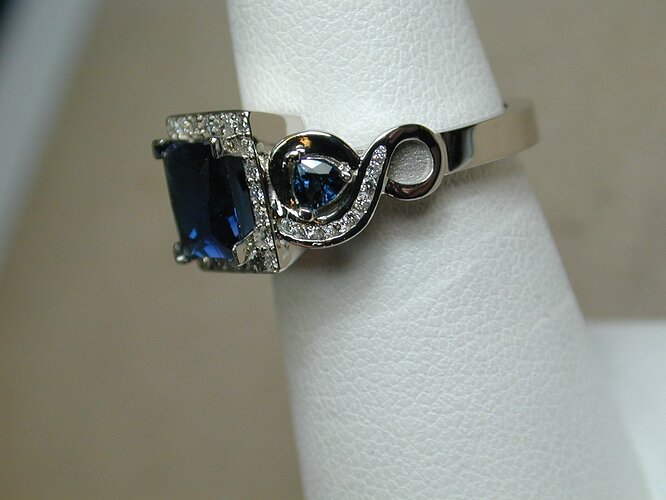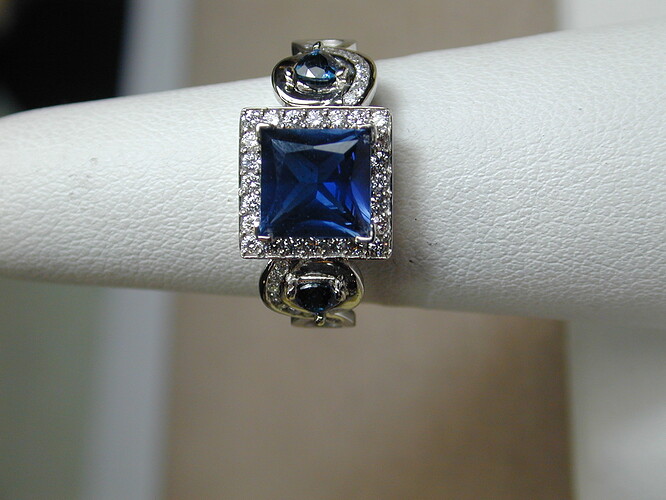Hi Gang,
I think I have an answer to the great micron mystery. One micron is
(more-or-less) 40 millionth’s of an inch. Which isn’t entirely
insane. It’s just three more digits beyond tenths. (ten thousandths
of an inch.)) I have a DTI and a digital mike that’ll read 50
millionths. (I got lost in all the zeros when I wrote it down the
first time, didn’t realize that it was ‘merely’ almost 40 millionths.
I think in inches, not metric, sorry.)
There were, back in the day, things called optical micrometers that
could hit millionths. We had them. (very rarely) I imagine the
Soviets ‘borrowed’ a few of them too. The problem is that yes, the
old optical mikes (bench mounted contraptions) and my modern gear
will give you a number. Whether or not that number means anything
is another question entirely. Steel expands 6 millionths per degree
(F). So just picking the part up, or leaving your hand on the mike
for a few seconds will trash your reading. Likewise, if there’s any
variation in the room temp, you’re off to the races, chasing a
meaningless number. The list of things that can trash the reading is
nearly infinite. Normally, if you’re after a serious measurement,
you throw out the last digit. So if I want to get a solid read on
something in ten-thousandths of an inch (.0001") I need a mike
that’ll read to .00005. AKA 50 millionths, or a smidge more than a
micron. I use the fancy mike for measuring gold foil for damascene.
Also, I have a.00005" reading DTI. I never use it because the cat
walking across the other end of the room is enough to send it
bouncing all over the place. Getting that level of measurement to
mean anything is an exercise in high-church metrology. It requires
burnt offerings, blood sacrifice, and a temperature and shock
controlled inner sanctum, along with priests of pure measurement,
schooled in the dark arts of metrology. If you’re serious about it,
you’re talking optical interferometers at that level of accuracy. (I
spoke with a buddy of mine who does this at lunch today. The
conversation quickly turned to gear that uses the spin state of
individual photons to get a distance reading. Not something that was
going to happen in Russia 40 years ago.) Just by way of example,
modern lab grade gage blocks have error bars 8/10 of a micron wide.
Meaning that they can be oversize by.2 microns, or under by.6. (for
the Starret lab master ultra precise blocks.) That’s very nearly the
best thing available anywhere on the planet, now. No way they were
machining production parts to. 001 microns 40 years ago. Sorry, just
not plausible.
What I think Leonid was talking about wasn’t surface accuracy, but
surface finish.
To bring this back to jewelry, once upon a time, when I was young
and dumb, I made a set of rolls for my rolling mill. I sent them out
to be ground after heat treating. The specs I used were that the
roller surface had to be cylindrically flat, parallel and concentric
to the journal surfaces, plus or minus 0.001". (one thousandth of an
inch. (Two orders of magnitude less than an almost micron.) But I had
them grind the surface of the rolls to a “5 micron” surface polish.
This didn’t mean that the surface was accurate to 5 microns, only
that the depth of the surface scratches was no more than 5 microns.
Think of it like polishing a piece of silver: if you have a rouge
polish on a heart pendant, you can say that you have a roughly 1
micron polish on it, but that says absolutely nothing about the
measurements of the shape of that heart. You can have a beautifully
polished piece of metal that’s totally the wrong shape.
What twigged it was when he was talking about the 10 CM ‘cube of
cubes’. That’s an old trick: Johansson did that with the first gage
blocks. They’d stick together when ‘wrung’ together. But it wasn’t a
function of the accuracy of their size, but of the quality of
their surface finish.
(Exactly why they stick together’s an interesting, and not entirely
settled discussion, but lately, suspicion has settled firmly on
gekkos. Little gekkos holding them together. (No, not really, but the
thought is that they’re sticking together mainly due to van der Waals
force, which is what helps gekkos stick to walls.))
So, that’s my theory about Leonid and the Magic Microns. Take it for
what it’s worth.
Regards,
Brian.

